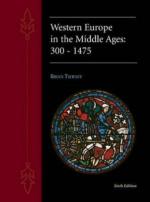|
This section contains 786 words (approx. 3 pages at 300 words per page) |

|
Regular Clergy. The life of the monk in a monastery differed little from that of the peasant farmer in the activities by which he maintained his livelihood. Both worked hard in the fields, clearing land and farming. The monk's religious vocation meant, however, that the same tasks were seen to be directed to a particular end or purpose, the service of God. Unlike the aphysical ascetic lifestyle that eastern monks took on, western monks stressed the spiritual value of physical work. Western monks or "regular" clergy followed a set of regulations known as the Rule, a pragmatic articulation of the habits that would keep monastic communities alive.
Daily Schedule. The daily schedule of the monk was much more ordered than that of the village peasant, one of the reasons perhaps that monastic farms were considered to have been the best in...
|
This section contains 786 words (approx. 3 pages at 300 words per page) |

|




